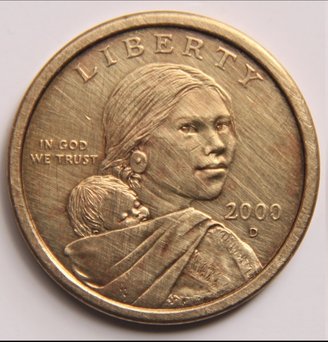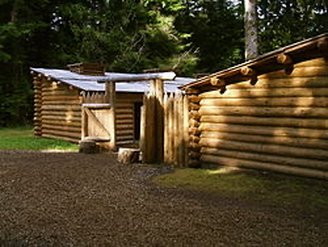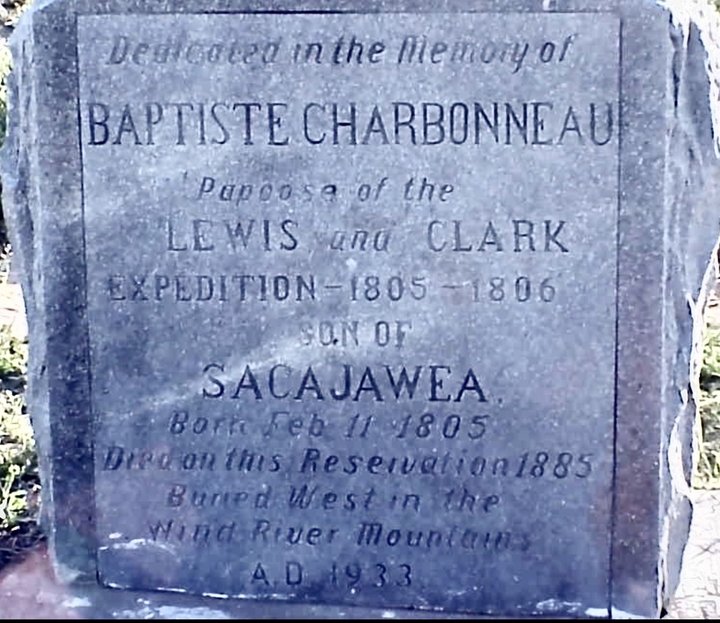His presence is often credited by historians with assuring native tribes of the expedition’s peaceful intentions, as they believed that no war party would travel with a woman and child.
— Wikipedia
###
If you know who is being referred to above, you were paying attention in your “Early US History” class. Since I learnt next to nothing about America in my 1950s education in the UK (other than Columbus sailing the ocean blue, enslaving the Taino natives of Hispaniola, and selling nine-year old girls as sex slaves), this is all new to me.
Q: Who was the youngest member of the Lewis and Clark expedition?
A: Jean Baptiste Charbonneau (February 11, 1805 – May 16, 1866), aka “Pompey” or “Pomp.”

Here he is, in this 2000 commemoration dollar, with his mom, the tough and long-suffering Shoshone Indian Sacagawea. His dad was Toussaint Charbonneau, Sacagawea’s Quebecois husband-captor, who probably won her gambling. The three of them—mom, dad and infant—joined the Lewis and Clark expedition in North Dakota, in Mandan Indian country, and journeyed with them to the Pacific. You probably know all this, including how Sacagawea was an interpreter for the group, how she saved Lewis and Clark’s diaries after a boat capsized in the Missouri River, and how she found camas roots for sustenance when food was low after they crossed the Rockies. If you don’t, you can get the Simpsons’ version, with Lisa playing the part of Sacagawea. Worth two minutes of your time:
Sacagawea died aged 24 in South Dakota… unless—according to one story—she survived, adopted the name “Porivo,” and died in Wyoming when she was 95. This much I recently learnt while visiting Lewis and Clark’s 1804-1805 winter quarters, Fort Clatsop, outside Astoria, Oregon. What got me intrigued was the subsequent story of Sacagawea’s son, Jean Baptiste, particularly because of his Northern California connections.

Reconstruction of Fort Clatsop (Lewis and Clark National Park)
Briefly: Three years after the expedition returned to the east, Sacagawea and Charbonneau accepted William Clark’s invitation to move to his home in St. Louis, Missouri. There, Clark took “Pomp” under his wing, enrolling him in the local Jesuit Catholic school. Later, in an odd twist of fate, the boy, now 18, met a German Prince who was visiting America on an extended hunting expedition. The prince, nephew of the king of Württemberg, took him back to Germany, where Jean Baptiste lived among royalty for nearly six years later. He became fluent in English, French, German and Spanish, and he fathered a son.
After the infant child died, he returned to the US, where he lived the life of a frontiersman: explorer, trapper, hunter, scout during the Mexican-American War and guide for a Mormon party headed to California. Somehow he was appointed mayor of the Mission San Luis Rey in present-day Oceanside. Shortly thereafter, disgusted by the missionaries’ treatment of the local Indians, he headed for Auburn, working as a gold prospector and hotel employee (one source says he was a hotel owner).
Jean Baptiste Charbonneau died in Danner, Oregon, in 1866, probably from contracting pneumonia after falling off his horse while crossing a river, en route to gold mines in Montana. He was 61.

Phil Konstantin, Creative Commons)
Which, I hope you agree, is quite a saga for a guy who started life crossing the Rocky Mountains in his mom’s papoose.
CLICK TO MANAGE